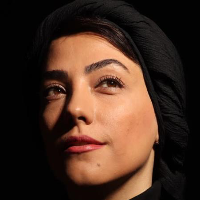The study of motifs and decorations in illustrated books of Selguk period
Abstract:
During the 9th and 10th Hijri solar centuries, equal to the 15th and 16th Gregorian centuries, Visualization art reached its climax in Iran. Iranian artists and painters were under the rule of Seljukian government which was a unique government after Islam. Of the complementary elements of visualization of that era, Calligraphy, Gilding, Patination1, Miniature and Passe-partout can be named. This was mainly because the prohibition of visualization in Islam caused the depression of this art in Islamic countries, especially during the early eras of Islam. The impact of this prohibition in religious centers such as mosques is so obvious that mosques decorations were particularly done in the forms of lines and geometric Islamic and Khatai shapes and as it is obvious, no human or animal images are seen in the mosques. Thus, visualization artists recognized the book page (religious or nonreligious) as a suitable spot to emanate their art. For this reason, in order for a better appreciation of early schools’ paintings and decorations, we should refer to the illustrated manuscripts and their decoration principles such as Gildings and Passe-partout of that era. In order for a better appreciation of early schools’ paintings and decorations, we should refer to the illustrated manuscripts of that era. After the advent of Islam, Muslims held an enormous respect for Quran, which was because of its significance. Thus, the summit of the visualization art was in decorating Quran. At first, Quran’s copies were decorated by geometric shapes and designs, but not long after that and with the translation of scientific and historic texts during Abbasi reign, the need for books’ visualization were felt. Little by little, during the Seljukian era, which is the first era after Islam, high detailed shapes were used instead of visualization by firm and senseless geometric shapes. This is how in this era, the images of humans, animals and plants entered the visualization books. Regarding the fact that the post-Islam era had the most influence on Iranian art or in other words, Iranian – Islamic art, some of its characteristics can be pointed out, such as using alternative shapes to replace the former geometric shapes and also the shift from Kofi calligraphy to Naskh. Most of the visualization artworks of this era is the illustrated images on clay, which because of the lack of paper painting in this era, studying the illustrated images on clays leads the researchers to a better understanding of Seljukian’s visualization type. Most of the existing paper back illustrations are diversely kept in museums outside Iran, which there are no valid information about them at present. This study aims to simultaneously introduce the visualized artworks and also to have a comparison check on the used decorations and shapes in the images of these books. Moreover, we have tried to point out the tangible similarities of the religious and nonreligious book decorations of Seljukian era and also to know what were these shapes’ inspiration.
Keywords:
Language:
Persian
Published:
Journal of Research in Arts and Humanities, Volume:3 Issue: 14, 2019
Pages:
1 to 10
magiran.com/p1951185
دانلود و مطالعه متن این مقاله با یکی از روشهای زیر امکان پذیر است:
اشتراک شخصی
با عضویت و پرداخت آنلاین حق اشتراک یکساله به مبلغ 1,390,000ريال میتوانید 70 عنوان مطلب دانلود کنید!
اشتراک سازمانی
به کتابخانه دانشگاه یا محل کار خود پیشنهاد کنید تا اشتراک سازمانی این پایگاه را برای دسترسی نامحدود همه کاربران به متن مطالب تهیه نمایند!
توجه!
- حق عضویت دریافتی صرف حمایت از نشریات عضو و نگهداری، تکمیل و توسعه مگیران میشود.
- پرداخت حق اشتراک و دانلود مقالات اجازه بازنشر آن در سایر رسانههای چاپی و دیجیتال را به کاربر نمیدهد.
In order to view content subscription is required
Personal subscription
Subscribe magiran.com for 70 € euros via PayPal and download 70 articles during a year.
Organization subscription
Please contact us to subscribe your university or library for unlimited access!



